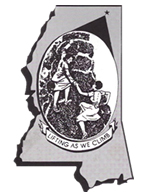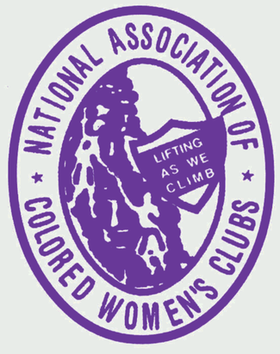
The National Association of Colored Women's Clubs (NACWC) is an American organization that was formed in July 1896 at the First Annual Convention of the National Federation of Afro-American Women in Washington, D.C., United States, by a merger of the National Federation of Afro-American Women, the Woman's Era Club of Boston, and the Colored Women's League of Washington, DC, at the call of Josephine St. Pierre Ruffin. From 1896 to 1904 it was known as the National Association of Colored Women (NACW). It adopted the motto "Lifting as we climb", to demonstrate to "an ignorant and suspicious world that our aims and interests are identical with those of all good aspiring women." When incorporated in 1904, NACW became known as the National Association of Colored Women's Clubs (NACWC).
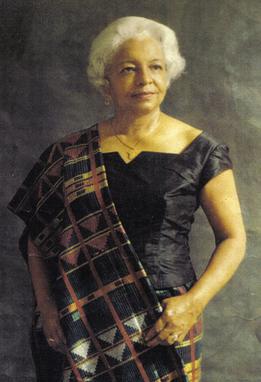
Helen Elsie Austin, known as H. Elsie Austin as an adult, was an American attorney, civil rights leader, and diplomat from the Midwest. From 1960 to 1970, she served for 10 years with the United States Information Agency (USIA) on various cultural projects in Africa. The first African-American woman to graduate from the University of Cincinnati School of Law, Austin was appointed in 1937 as an assistant attorney general in Ohio. She was the first black and the first woman to hold this position.
The following is a timeline of the history of the city of Jackson, Mississippi, USA.
Washington Conservatory of Music and School of Expression was a private music academy founded by Harriet Gibbs Marshall in 1903 in Washington, D.C. to train African Americans in music. The Conservatory remained open until 1960 making it the longest operating music school for African Americans.

The Northeastern Federation of Colored Women's Clubs (NFCWC) is an umbrella organization representing black women's clubs in the northeastern United States. The organization was affiliated with the National Association of Colored Women's Clubs (NACWC). It was the first umbrella organization for black women's clubs in the United States, predating the NACWC by a month. The motto of the club is "For God and Humanity".
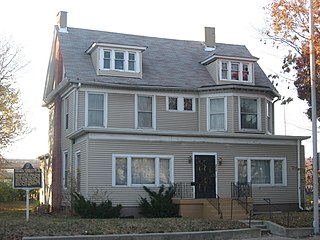
Indiana State Federation of Colored Women's Clubs, also known as the Minor House, is a historic National Association of Colored Women's Clubs clubhouse in Indianapolis, Indiana. The two-and-one-half-story "T"-plan building was originally constructed in 1897 as a private dwelling for John and Sarah Minor; however, since 1927 it has served as the headquarters of the Indiana State Federation of Colored Women's Clubs, a nonprofit group of African American women. The Indiana federation was formally organized on April 27, 1904, in Indianapolis and incorporated in 1927. The group's Colonial Revival style frame building sits on a brick foundation and has a gable roof with hipped dormers. It was listed on the National Register of Historic Places in 1987.

The woman's club movement was a social movement that took place throughout the United States that established the idea that women had a moral duty and responsibility to transform public policy. While women's organizations had always been a part of United States history, it was not until the Progressive era that it came to be considered a movement. The first wave of the club movement during the progressive era was started by white, middle-class, Protestant women, and a second phase was led by African-American women.
The Texas Association of Women's Clubs (TAWC) is an umbrella organization of African American women's clubs in Texas. It was first organized as the Texas Federation of Colored Women's Clubs in 1905. The purpose of the group was to allow clubs to work together to improve the social and moral life of people in Texas. The club also spoke on topics of interest to black women in the United States.

The South Carolina Federation of Colored Women's Clubs (SCFCWC) was an African American women's club founded in 1909 in South Carolina. The umbrella organization was created by Marion Birnie Wilkinson, Sara B. Henderson, Lizella A. Jenkins Moorer, Celia Dial Saxon and other women who met at Sydney Park Church in Columbia. They adopted the motto of the National Association of Colored Women's Clubs (NACWC), "Lifting as We Climb." Wilkinson became the first president and worked towards improving education and living conditions for black people in South Carolina. The organization grew to have twenty-five hundred members in 1922. One of the major accomplishments of the SCFCWC was the creation of the Wilkinson Home for Colored Girls in Cayce. The home was originally for girls who had been deemed "delinquent" and later housed orphans.
The Woman's Era Club was an African-American women's civic organization founded in Boston, Massachusetts, in between 1892 and 1894 by Josephine St. Pierre Ruffin. The Club was the first black women's club in Boston. The organization was especially well-known for the conflict caused when Ruffin attempted to desegregate the General Federation of Women's Clubs (GFWC) in 1900.
The Empire State Federation of Women's Clubs (ESFWC) was founded in 1908 and is an umbrella organization for African-American women's groups in New York. The organization worked to help improve the lives of young women and helped care for Harriet Tubman until her death in 1913. The organization was affiliated with the National Association of Colored Women's Clubs, and worked with the NAACP.

The Iowa Federation of Colored Women's Clubs (IFCWC) was an umbrella organization serving African-American women's clubs in Iowa. The motto of IFCWC was "Sowing Seeds of Kindness", and the organization was affiliated with the National Association of Colored Women. The club produced a journal called the Iowa Colored Woman. IFCWC sent delegates to represent the state at national conventions and opportunities such as "Colored Women's day" at the 1939 New York World's Fair. The IFCWC is also known for creating a black women's dormitory for the University of Iowa before the school was fully integrated. The building has been listed on the National Register of Historic Places.
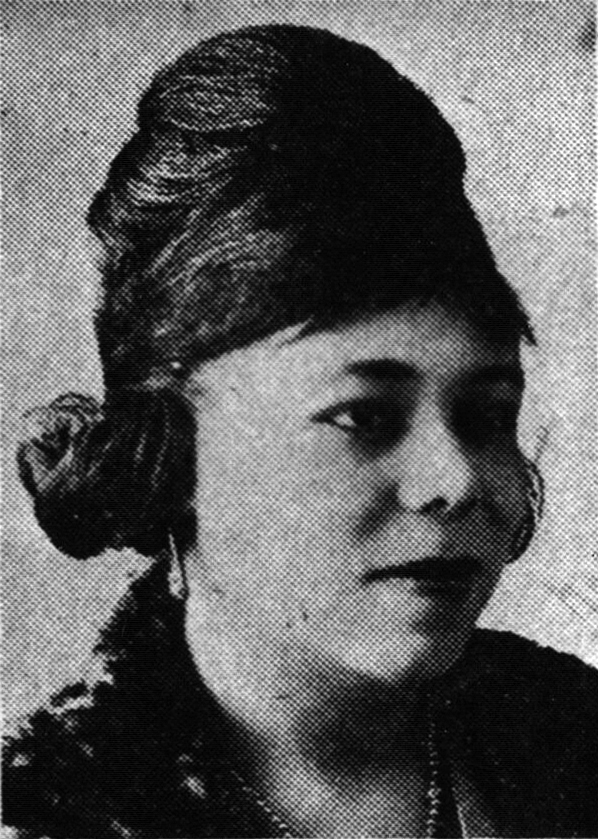
Vivian Osborne Marsh was an American clubwoman based in San Francisco, California. She was president of the California State Association of Colored Women, and national president of Delta Sigma Theta.

Helen Appo Cook was a wealthy, prominent African-American community activist in Washington, D.C., and a leader in the women's club movement. Cook was a founder and president of the Colored Women's League, which consolidated with another organization in 1896 to become the National Association of Colored Women (NACW), an organization still active in the 21st century. Cook supported voting rights and was a member of the Niagara Movement, which opposed racial segregation and African American disenfranchisement. In 1898, Cook publicly rebuked Susan B. Anthony, president of the National Woman's Suffrage Association, and requested she support universal suffrage following Anthony's speech at a U.S. Congress House Committee on Judiciary hearing.

Ida Louise Jackson was an American educator and philanthropist. She attended and graduated from the University of California, Berkeley following her family’s move to California. As one of 17 Black students that attended the university at the time, Jackson prioritized creating safe spaces for African American community members. Throughout her undergraduate career, Jackson was invested in a teaching career, specifically in Oakland, California. Despite push back from school administration, her dreams were finally realized in 1926 when she became the first African American woman to teach high school in the state of California. At the same time, her ambitions were rooted in giving back to her community back in Mississippi. Through the networks that she formed in California, Jackson returned back to her home state in 1935 to develop programs around education and health care for poor, rural Black folks. Ida Louise Jackson’s contributions were celebrated by her alma mater and the University of California, Berkeley named their first graduate apartment housing unit in her honor.

Alma Vessells John was an American nurse, newsletter writer, radio and television personality, and civil rights activist. Born in Philadelphia in 1906, she moved to New York to take nursing classes after graduating from high school. She completed her nursing training at Harlem Hospital School of Nursing in 1929 and worked for two years as a nurse before being promoted to the director of the educational and recreational programs at Harlem Hospital. After being fired for trying to unionize nurses in 1938, she became the director of the Upper Manhattan YWCA School for Practical Nurses, the first African American to serve as director of a school of nursing in the state of New York.. In 1944, John became a lecturer and consultant with the National Nursing Council for War Service, serving until the war ended, and was the last director of the National Association of Colored Graduate Nurses from 1946 until it dissolved in 1951. Her position at both organizations was to expand nursing opportunities for black women and integrate black nurses throughout the nation into the health care system.
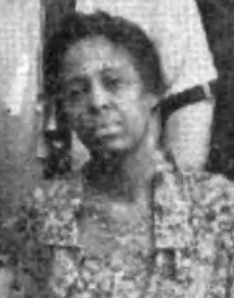
Alice Carter Simmons was an American pianist, organist, and music educator. She was the founding secretary of the National Association of Negro Musicians (NANM), and was head of the instrumental music program at Tuskegee Institute beginning in 1916; she also taught at Fisk University.

Maude J. Roberts George was an American singer, arts administrator, and music critic. She was president of the National Association of Negro Musicians (NANM) from 1933 to 1935. She was also president of the Chicago Music Association, and a music critic for The Chicago Defender newspaper.
